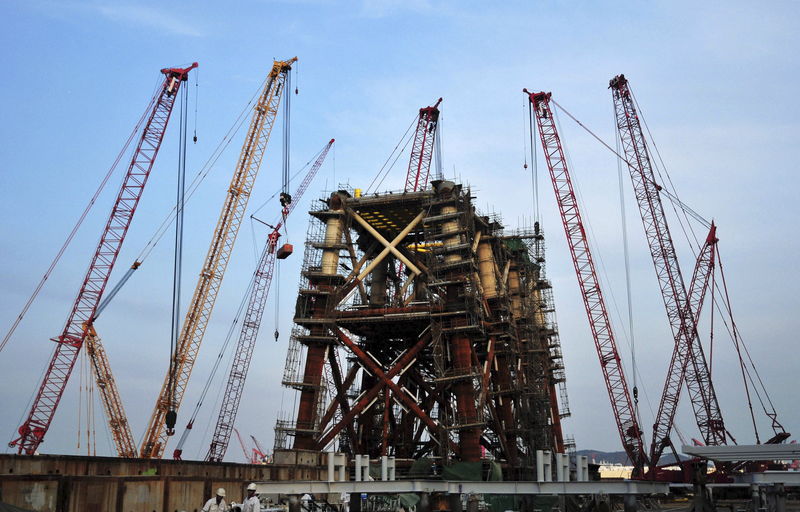
© Reuters.
LCO
+0.31%
Add to/Remove from Watchlist
Add to Watchlist
Add Position
Position added successfully to:
Please name your holdings portfolio
Type:
BUY
SELL
Date:
Amount:
Price
Point Value:
Leverage:
1:1
1:10
1:25
1:50
1:100
1:200
1:400
1:500
1:1000
Commission:
Create New Watchlist
Create
Create a new holdings portfolio
Add
Create
+ Add another position
Close
CL
+0.44%
Add to/Remove from Watchlist
Add to Watchlist
Add Position
Position added successfully to:
Please name your holdings portfolio
Type:
BUY
SELL
Date:
Amount:
Price
Point Value:
Leverage:
1:1
1:10
1:25
1:50
1:100
1:200
1:400
1:500
1:1000
Commission:
Create New Watchlist
Create
Create a new holdings portfolio
Add
Create
+ Add another position
Close
By Peter Nurse
Investing.com — Oil prices traded higher Friday, boosted by signs of recovery in China’s economy and slightly cooler than expected U.S. inflation data.
By 08:45 ET (12:45 GMT), U.S. crude futures traded 0.5% higher at $74.75 a barrel, while the Brent contract rose 0.1% to $78.69 a barrel. Both benchmarks are trading close to two-week highs.
Data released Friday showed that the U.S. core personal consumption expenditures index rose just 0.3% in February, below the 0.4% expected, while the annual figure came in at 4.6%, below the 4.7% predicted.
While this represented only a small drop from expectations, these are the Federal Reserve’s most closely watched inflation figures and add fuel to the talk that the U.S. central bank could pause its rate-hiking cycle when it next meets in May as it digests the potential hit to activity caused by the banking turmoil.
Adding to the positive tone were the business activity figures out of China earlier Friday.
China’s official composite purchasing managers index, a rough real-time proxy for economic activity, hit its highest level since before the pandemic. The improvement was due entirely to non-manufacturing, while the manufacturing PMI, which tracks mainly the country’s big state-owned enterprises, fell slightly, although still came in higher than expected.
China is the world’s largest importer of crude, and expectations of a sharp recovery in demand as its economy reacts to the withdrawal of COVID-19 restrictions have provided underlying support for most of this year.
That said, both crude benchmarks are still on course for monthly drops of around 6%, after hitting their lowest levels since 2021 earlier in the month in the wake of the banking turbulence.
Looking at the supply side, the European Commission said this week that the $60-a-barrel cap on the price of Russian oil is proving effective in hurting the Kremlin’s access to petrodollars while not disrupting the market, and will remain unchanged for now.
Additionally, U.S. crude oil stockpiles fell unexpectedly last week, with the Energy Information Administration recording a 7.5 million-barrel drop in crude inventories to a two-year low.
Attention next week will be the meeting of the monitoring committee of the Organization of the Petroleum Exporting Countries and allies, including Russia, a group known as OPEC+.
This committee has the power to recommend output changes to the wider group, but is not expected to agree to another output cut beyond the 2 million barrels per day it announced in November.
“The group would have taken comfort in the market appearing to have stabilised following the turmoil seen in financial markets over March,” said analysts at ING, in a note.
The release of the CFTC’s net positioning data and the Baker Hughes’ rig count later in the session round off the week.
Source: Investing.com




























